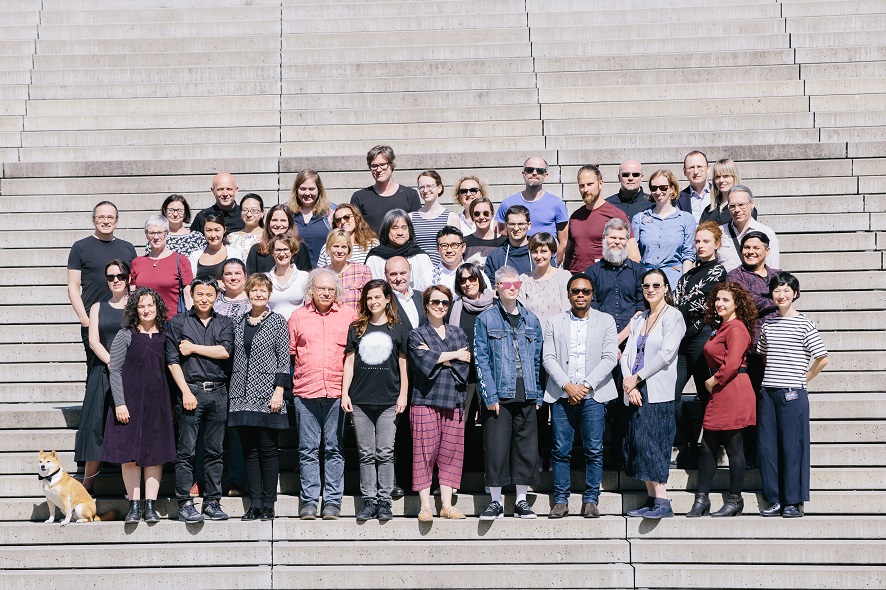It is a tradition at Ars Electronica: Ever since 1987, experts in the arts, science, technology, business, and more from around the world travel to the Ars Electronica Center in Linz, to spend a long weekend choosing the best works of media art as a part of the Prix Ars Electronica jury. This year, the international jurors worked their way through 3040 submissions from more than 80 countries in four categories: Computer Animation, Interactive Art +, Digital Communities, and u19 – CREATE YOUR WORLD.
In two previous blog posts, we have already written about which experts exactly chose the winning submissions in which jury. When the jury members made it to Linz, started looking through the numerous submissions in the jury rooms at the Ars Electronica Center and the Futurelab, discussed and evaluated the works of media art, we quietly joined them in their jury sessions and captured a few moments of the decision-making process.
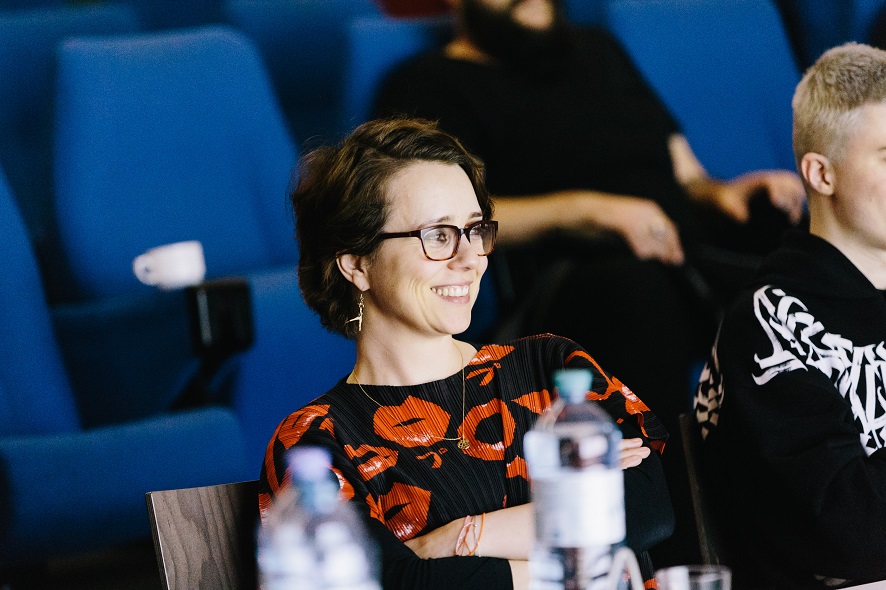
Gaëlle Denis. Credit: Florian Voggeneder
Computer Animation
The low hum of the correct access card opens the doors to the first jury. Inside the darkened seminar room, in blue theater-type seats or sat down in front of their documents, the jury members of the Comuter Animation category sift through the submitted works. Historically one of the categories with the most amount of submissions, there is a lot of work to be done this weekend for the Animation jury – only fifteen pieces should remain at the end, only one will win the Golden Nica. “It’s a yes from me”, we hear a voice out of the jury. “No for me”, “yes”, “no”, “no”, “yes”, the first round is mostly based on consensus.
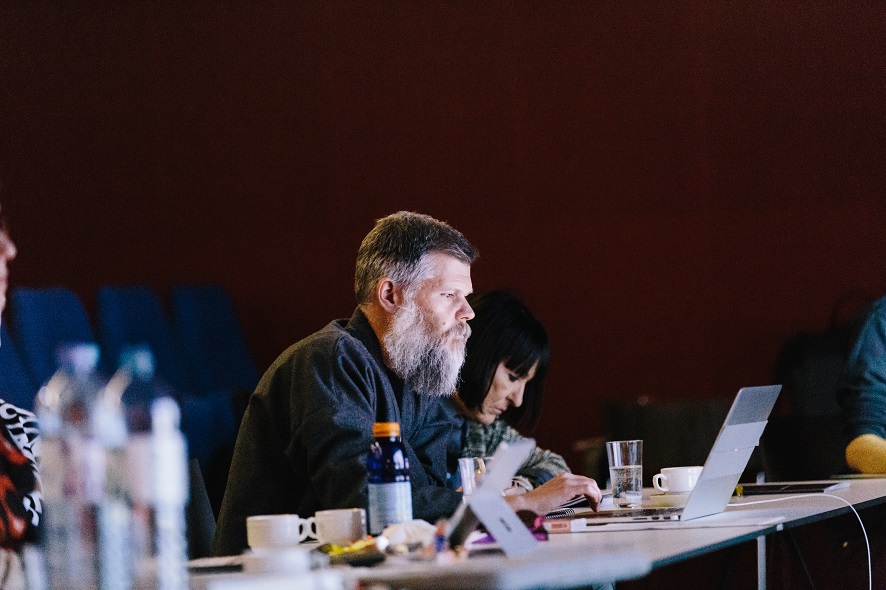
Casey Reas. Credit: Florian Voggeneder
Two days later, we check on the jury again. The situation within the dark room has completely changed. There are only a handful of works left in the closer selection, a heated discussion is in progress. “Isn’t this only a passing fad?”, questions one jury member. “Yes, but one thing we can do is to archive the moment”, a second jury member chimes in. There are only hours left until the final decisions, but the last few adjusments will remain difficult until the last moment. Carefully, we close the door again – the jury needs a maximum of concentration now.
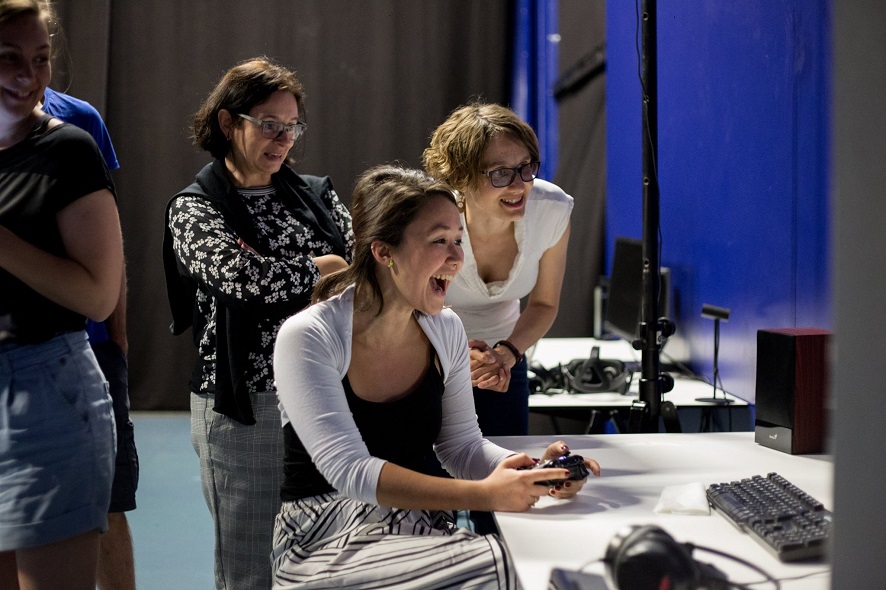
Die u19 Jury beim Spiele-Testen. Credit: Vanessa Graf
U19 – CREATE YOUR WORLD
Cheers are coming out of the meeting room at the Ars Electronica Futurelab. Cheers, this early? We are curious and decide to visit the jurors of the u19 category, in which works of kids and teenagers under 19 years are honored. Every year, the submissions are diverse and impressive, not least because of the young age of the participants. The selection is difficult, which makes it all the more pleasant when a winning project is found – like we just witnessed. The non-cash prize u14 has been chosen.

Sirikit Amann. Credit: Florian Voggeneder
Besides the Golden Nica, the two awards of distinction and several honorary mentions, which are awareded in each category, there are two non-cash prizes for youngsters under 10 (u10) and 14 (u14) years of age, as well as the special prize netidee. The reason is simple: “It is incredibly hard to compare the works of an eight-year-old with that of a teenager of 18 years,” a jury member tells us. The additional prizes honor the wide range of ages and submissions.

Credit: Vanessa Graf
Digital Communities
One floor down, the Digital Communities jury is discussing innovations in human communities. How does the growing digital interconnectedness change social initiatives? Which social effects does the internet have? And how do Digital Communities even look like in 2018? It is not always easy to immediately comprehend the projects in this category – man discussions, background information, and clarifications are necessary to select a winning project to take home the Golden Nica.

Kazuko Tanaka. Credit: Florian Voggeneder
Time and time again, there is talk of the social impact of the projects. “It is really interesting to see the diversity of the projects and how they affect the lives of people or society,” one juror tells us on the last day of jury deliberations. “For me, it is very interesting to see the development of the projects – going from grassroots movements to established organizations,” adds another jury member, who has already worked as part of the Prix Ars Electronica jury several times before. At this point, both of them already know who wins the Golden Nica in 2018 – but it will be a few weeks before we can officially give away the secret.
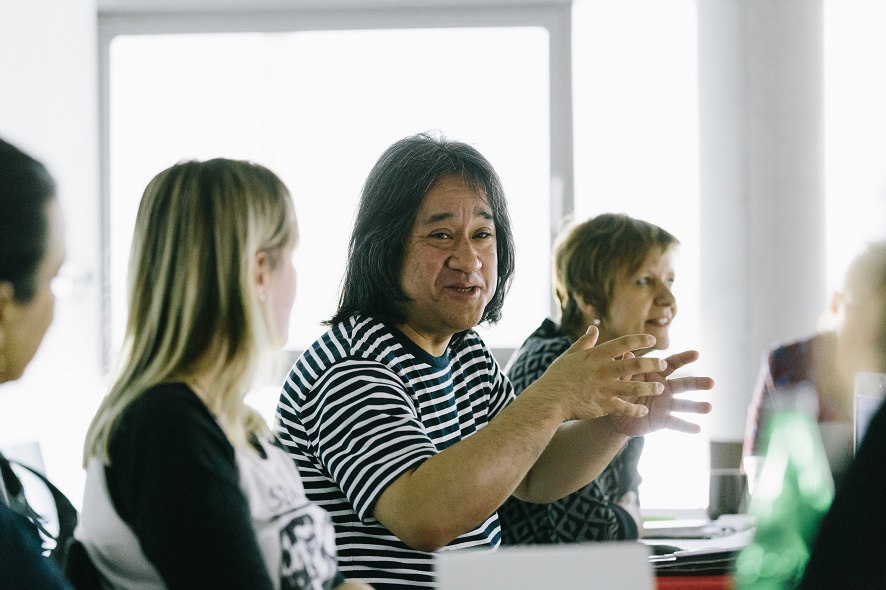
Minoru Hatanaka. Credit: Florian Voggeneder
Interactive Art +
As we visit the jury in Interactive Art + for the first time, the jury members are going through the submissions, present the projects that they personally find very interesting, and try to undertsand the interactive works of art from afar, having only images and videos to base their decisions on. When we come back a few hours later, the discussion has taken another course – a flipchart is standing in the middle of the room, written on it are the words: “What is IA in 2018?”
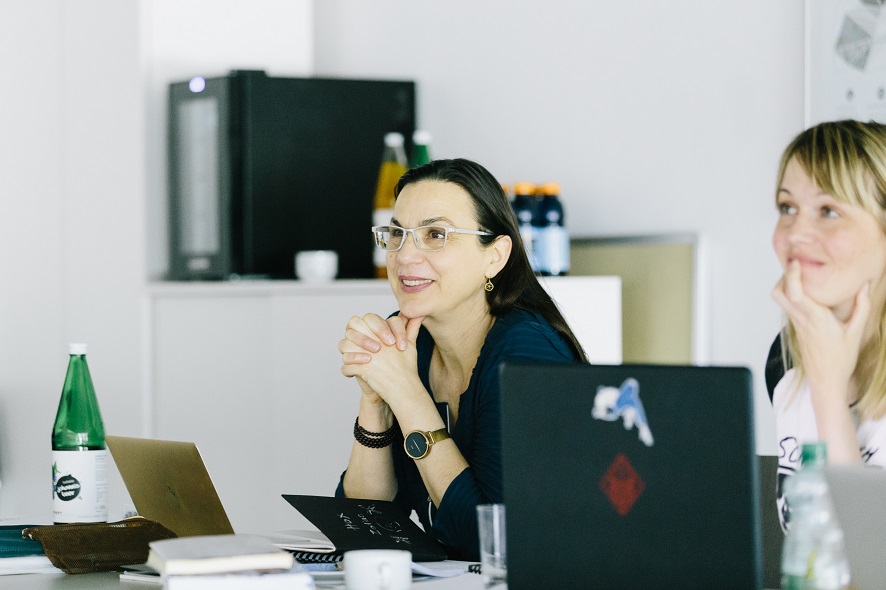
Victoria Vesna. Credit: Florian Voggeneder
It is very basic questions like these which have to be talked about at each and every edition of Prix Ars Electronica in this category. To pronounce a general verdict on the definition of this category is impossble, a jury member tells us after the meetings – the submissions are just too diverse. Interactive Art is many things – this definition will have to do for the time being. We leave the jury to it and step out for a moment. The next time we visit them again, the last several chosen projects are written on cards and laid out on the table. The order changes from time to time, some of them move place, but finally, they foud it: This year’s Golden Nica project. The jury celebrates on Ars Electronica’s rooftop with a glass of sparkling wine – hooray, we did it!
What’s next?
In the coming days and weeks, the recipients of the Golden Nicas, awards, and mentions will be notified. In June 2018, they and their prizewinning works of media art will be presented at a press conference and here on the Ars Electronica Blog. Many of the prizewinning works will be on display at the CyberArts exhibition at the OK Center for Contemporary Art beginning on September 6th, opening day of the 2018 Ars Electronica Festival in Linz. The festival lineup will once again include Prix Forums at which the artists and jurors get together to discuss the works singled out for recognition this year, as well as the awards gala at which the Golden Nica statuettes will be formally bestowed upon this year’s Prix Ars Electronica prizewinners. Stay tuned for further developments!
To learn more about the festival, follow us on Facebook, Twitter, Instagram et al., subscribe to our newsletter and visit our website at https://ars.electronica.art/error/en/.
